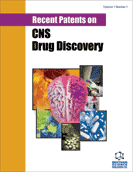Abstract
Naturally occurring cannabinoids (phytocannabinoids) are biosynthetically related terpenophenolic compounds uniquely produced by the highly variable plant, Cannabis sativa L. Natural and synthetic cannabinoids have been extensively studied since the discovery that the psychotropic effects of cannabis are mainly due to Δ9-THC. However, cannabinoids exert pharmacological actions on other biological systems such as the cardiovascular, immune and endocrine systems. Most of these effects have been attributed to the ability of these compounds to interact with the cannabinoid CB1 and CB2 receptors. The FDA approval of Marinol® , a product containing synthetic Δ9-THC (dronabinol), in 1985 for the control of nausea and vomiting in cancer patients receiving chemotherapy, and in 1992 as an appetite stimulant for AIDS patients, has further intensified the research interest in these compounds. This article reviews patents (2003-2007) that describe methods for isolation of cannabinoids from cannabis, chemical and chromatographic methods for their purification, synthesis, and potential therapeutic applications of these compounds.
Keywords: Cannabis sativa L, cannabinoids, phytocannabinoids, pharmacological actions, CB1 and CB2 receptors, isolation, purification, synthesis, therapeutic applications
 18
18





















